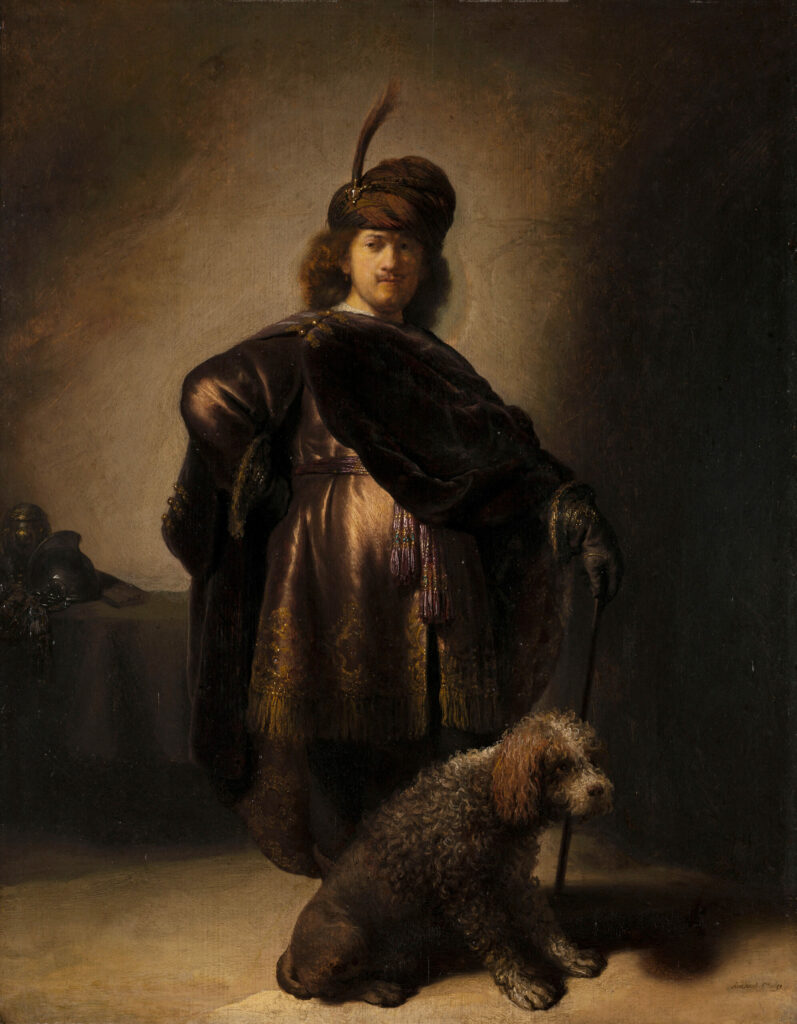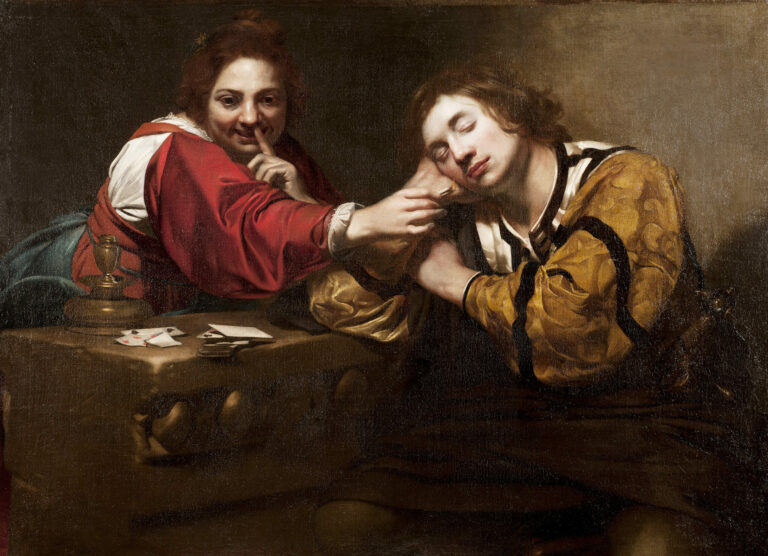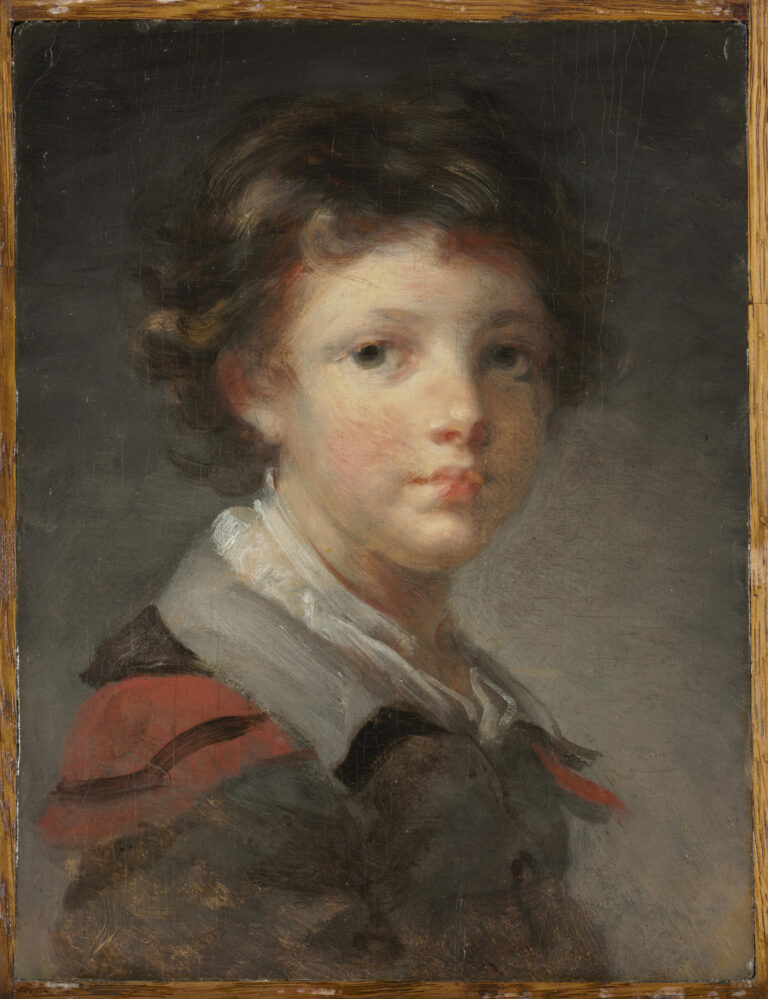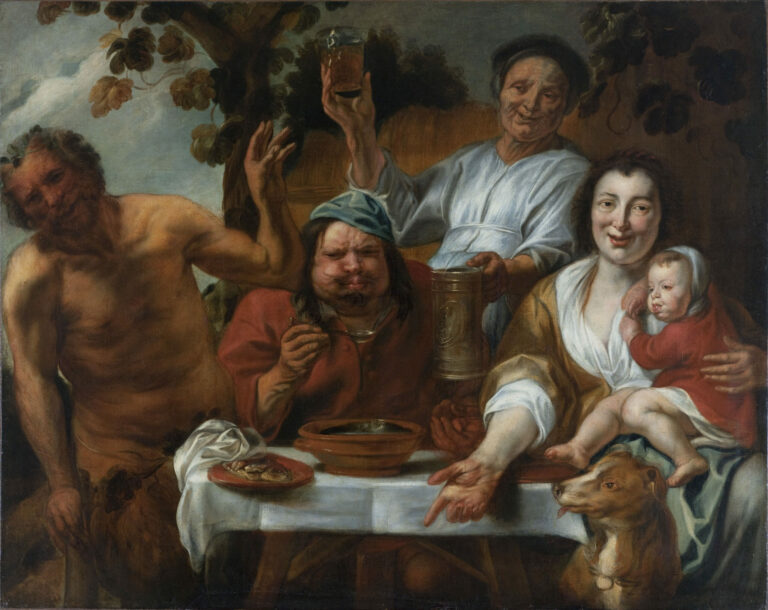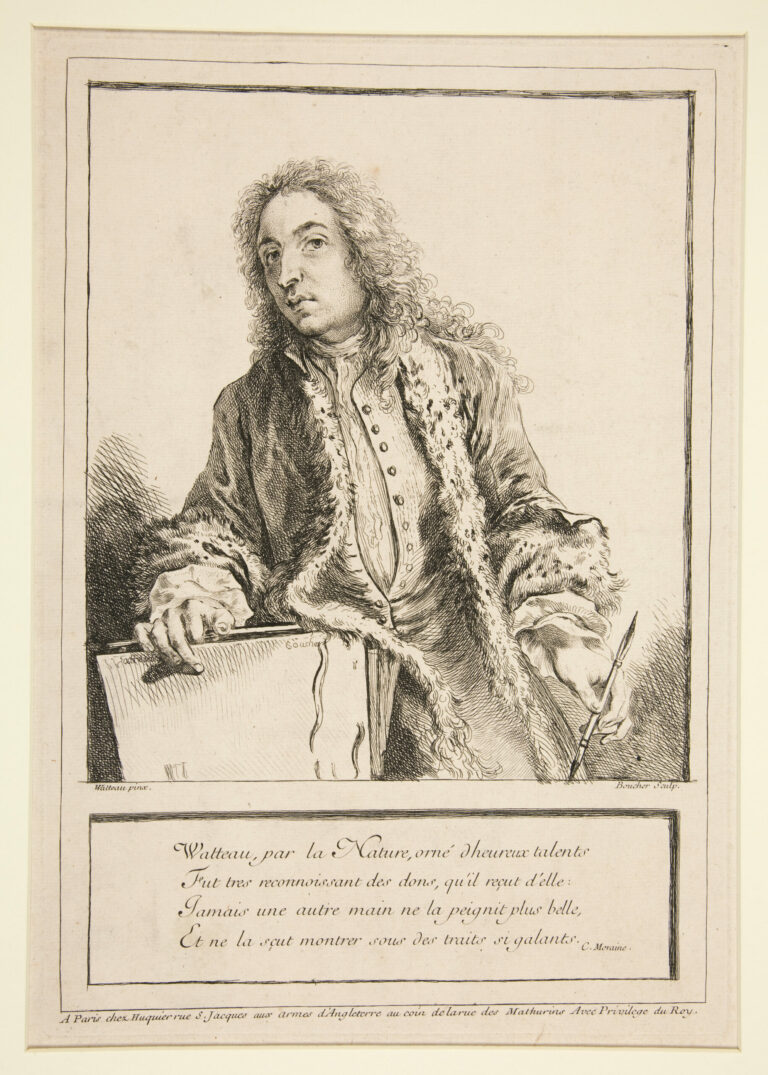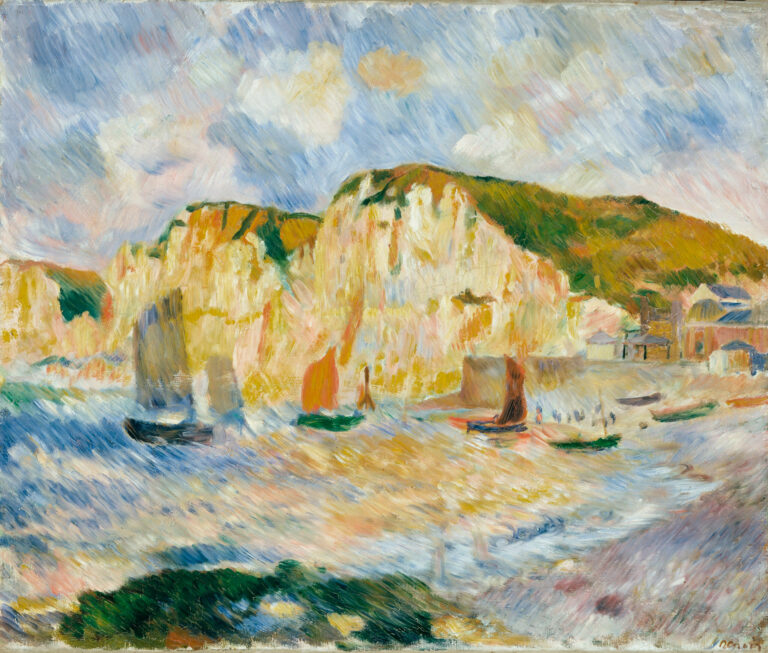In this self-portrait, Rembrandt stages himself with deliberate theatricality, embodying an Oriental prince in an exercise as audacious as it is mysterious.
The artist deploys his full technical virtuosity in rendering sumptuous materials: the deep velvet of the coat, the satiny reflections of the tunic, and the gold embroidery and precious stones that sparkle on the striped sash.
The chiaroscuro, the master’s signature technique, dramatizes the composition while sculpting volumes with remarkable subtlety. The pose is studied, almost arrogant, with one gloved hand carelessly resting on a cane and the other asserting a position of power on his hip. The plumed turban, the quintessential Oriental attribute, crowns this mise-en-scène.
The subsequent addition of the small spaniel, whose enigmatic presence adds a touch of domestic realism to this theatrical composition, reveals the artist’s pentimenti and his perpetual quest for perfection.
Further Context
- Portrait of the Artist in Oriental Costume by Rembrandt van Rijn, c. 1631/1633
- 65 x 52 cm
- Paris Musées, Petit Palais, Museum of Fine Arts of the City of Paris
- https://www.parismuseescollections.paris.fr/fr/petit-palais/oeuvres/portrait-de-l-artiste-en-costume-oriental-0
Rembrandt Harmenszoon van Rijn (1606-1669) is one of the most iconic figures of the Dutch Golden Age. An undisputed master of chiaroscuro, he revolutionized the art of portraiture and self-portraiture, a genre in which he excelled throughout his career, leaving us nearly eighty representations of himself.
This obsession with self-representation, unique in art history, testifies to a constant exploration of his identity as both artist and man. His career, marked by early success followed by reversals of fortune, never diminished his creativity or ability to reinvent himself, as evidenced by this portrait where he presents himself as an Oriental prince.

